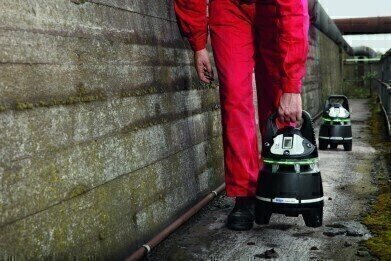Gas Detection
Measuring Toxic and Explosive Gases Over a Wider Area with New Wireless System
Aug 05 2010
Transportable gas detection has entered a new era with the launch of the Draeger X-zone 5000 wireless monitoring unit from Draeger (Germany). Easily positioned and providing clear alarms, these robust, waterproof units ensure increased levels of safety by detecting and communicating the presence of a wide range of toxic, combustible and explosive gases over longer distances. Bringing Zone 0 ATEX performance, longer sensor life, enhanced battery life and more flexibility to area monitoring, the Draeger X-zone also offers a lower cost of ownership.
Using a variety of alarms to warn of different types of gases, up to 25 Draeger X-zones can be used at any one time, acting as wireless monitors around a specific zone, including those areas where an explosion hazard might exist. This networking and synchronised signalling capability means that people can be guided away from the potential hazard.
Allowing gas ingress from every side, independent of wind direction, the units are designed for use with Draeger X-am portable gas detection instruments. When used in conjunction with the Draeger X-am 5000, for example, it can be fitted with up to four sensors to detect as many as five gases at once. In this instance, by using a catalytic Ex-sensor together with two electrochemical sensors and a combination, double sensor for CO and H2S, it will provide simultaneous measurement of gases and vapours such as hydrocarbons, hydrogen, O2 and other explosive, combustible or toxic gases.
Continuous monitoring
Deployed at varying distances apart, the transportable measuring heads continuously monitor a number of different gases. Easy to see, even from a distance, a green LED band around the circumference of the unit indicates that the air is clean. As soon as one of the units detects a gas it immediately transmits an alarm to each of the others, the LED bands of the alarming unit change to red while the others show green and red signals, and unambiguous visual and alarms are issued. At the same time, a loud evacuation alarm is emitted and a patented 360º alarm amplifier ensures that it is heard with the same intensity in all directions.
Unlike portable instruments which usually leave the scene with the wearer, the units can be left inside the zone, constantly issuing an alarm as long as the danger exists. Facilitating an easy, unmistakable evacuation in the event of a gas hazard, they also alert other personnel to the presence of a danger zone.
For continuous monitoring of confined spaces and other areas that are difficult to access, an optional integrated pump can be used for distances of up to 45m. Approved to IP67 for dust and water ingress, the unit can also be used with external equipment such as alarm horns, lamps or traffic lights. In addition, the fenceline signal and alarm contact point can be forwarded to a central control room for further management procedures.
Digital Edition
IET 34.2 March 2024
April 2024
Gas Detection - Biogas batch fermentation system for laboratory use with automatic gas analysis in real time Water/Wastewater - Upcycling sensors for sustainable nature management - Prist...
View all digital editions
Events
May 03 2024 Seoul, South Korea
May 05 2024 Seville, Spain
May 06 2024 Minneapolis, MN, USA
May 13 2024 Munich, Germany
May 15 2024 Lund, Sweden


















